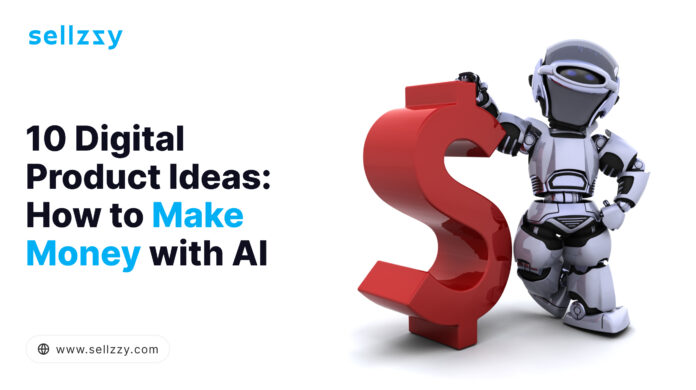Artificial intelligence isn’t just for big companies anymore. With the rise of generative AI tools, anyone with creativity and a bit of hustle can make digital products and earn income. Below are ten ideas for digital products powered by AI, plus tips for making them sell well.
1. E-Books & Guides
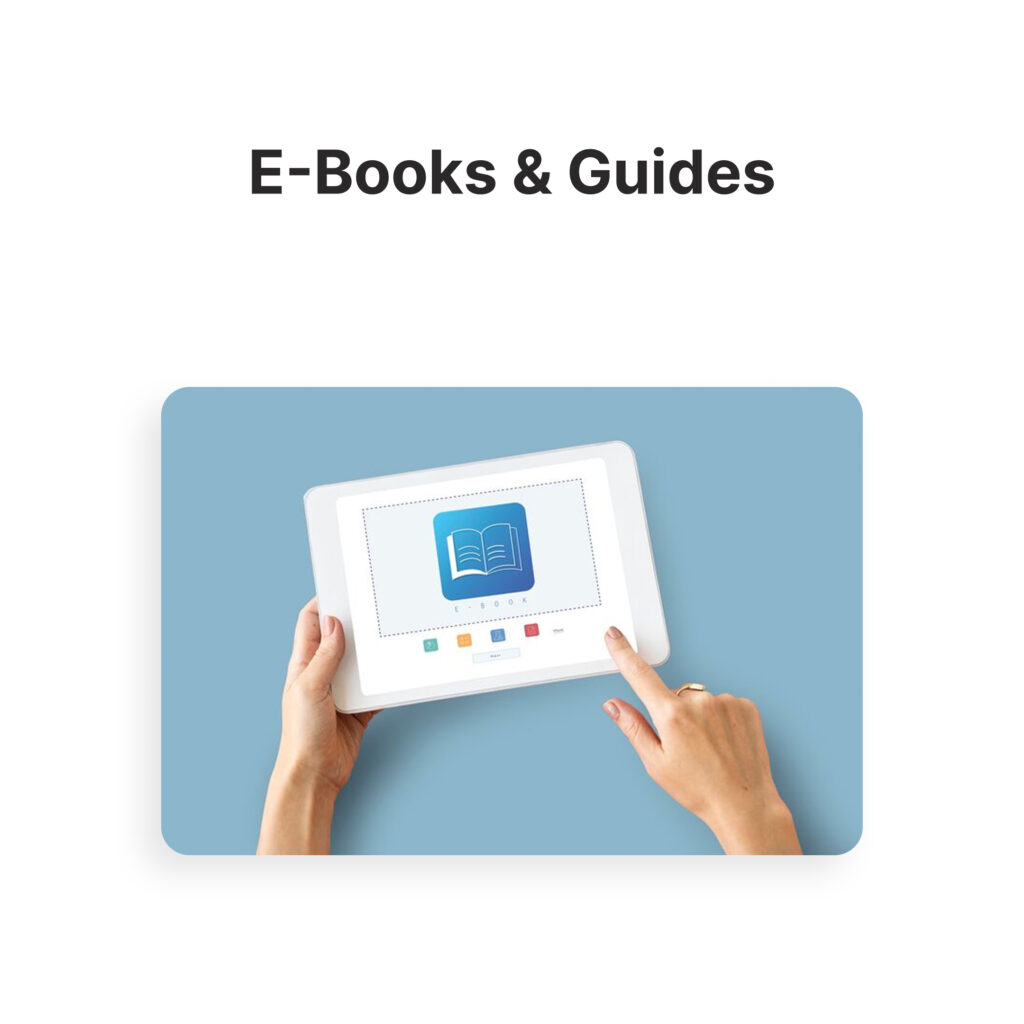
What it is: Write e-books, guides or tutorials on niche topics using AI assistance. For example, use tools to generate drafts, organize structure, refine writing, add examples, and design covers.
Why it works: Low overhead, high margin. Once written, you can sell repeatedly. AI speeds up creation.
How to do it well: Identify a niche with demand (how-to, self-help, technical, hobbies). Use keyword research to figure out what topics people want. Use AI for drafting, but edit and personalize to add your voice and ensure quality.
2. Online Courses & Workshops

What it is: Build video, text or mixed media courses. AI can help generate scripts, slide decks, even voiceovers, quizzes, assessments, etc.
Why it works: People pay for learning. If your course solves a clear problem, it can sell well.
How to do it well: Choose a specific problem audience has. Structure in digestible modules. Provide downloadable resources (templates, checklists). Use AI to speed up production, but human quality control is key.
3. Templates & Planners
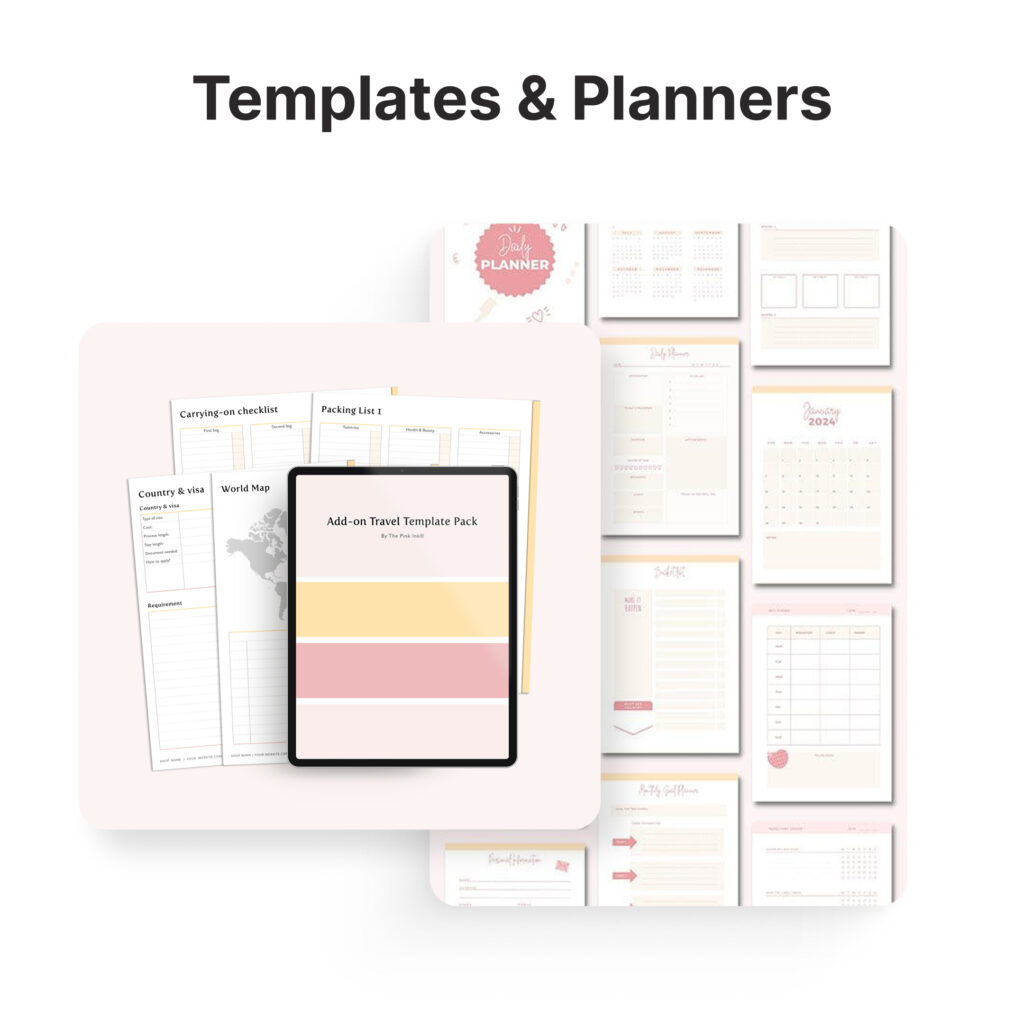
What it is: Digital templates (for business, design, productivity etc.), planners (daily, weekly, goal planners), dashboards (Notion, Airtable, etc.), resume templates, social media post templates.
Why it works: Many people want things ready-made. Minimal work for you once the template is built.
How to do it well: Make templates clean, easy to customize. Ensure compatibility with popular tools. Create multiple variations. Use AI tools for design/layout suggestions and content generation.
4. Graphics, Prints & Digital Art
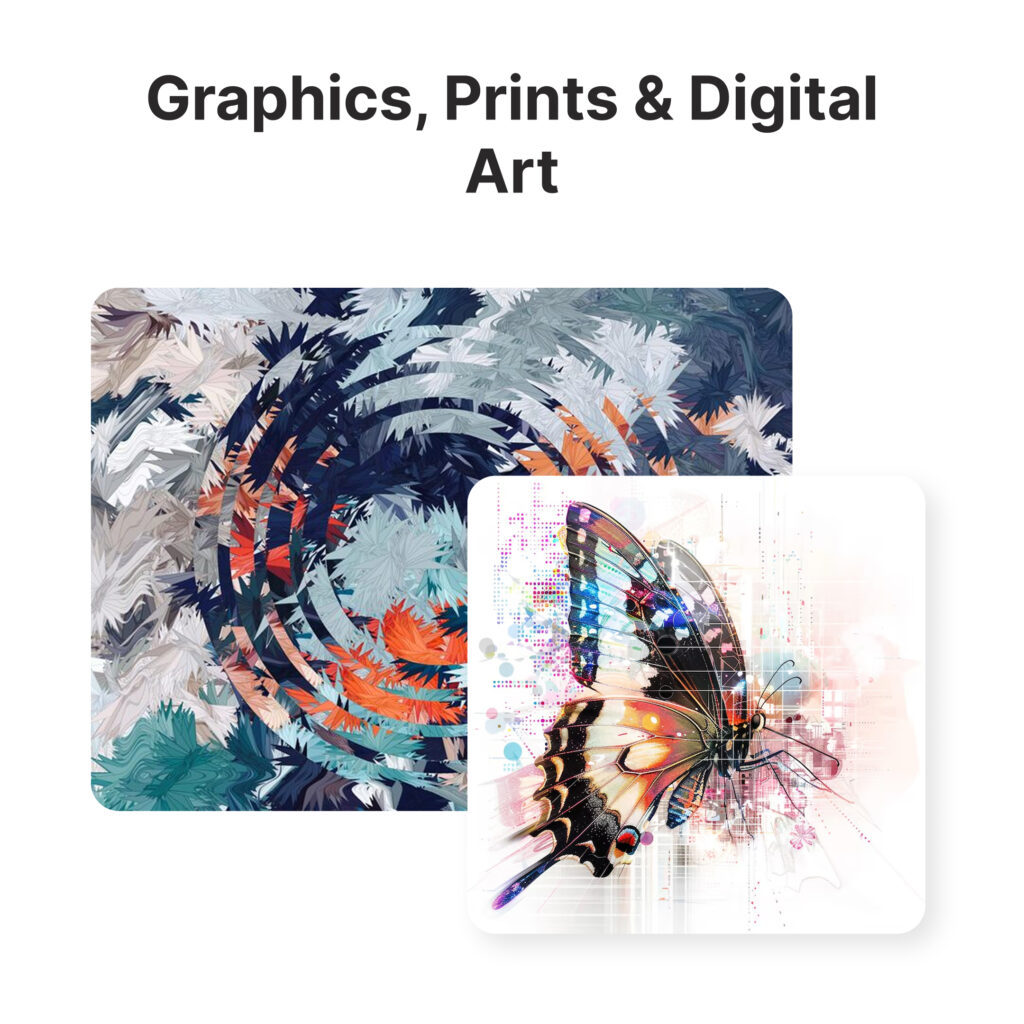
What it is: Use AI-image generators to create art, logos, illustrations, printable posters, patterns, decorative graphics.
Why it works: Digital art can be sold through various platforms, and you only need to design once.
How to do it well: Stay aware of style trends. Ensure you have commercial rights to the AI tools/images. Create high resolution files. Consider bundles or themed collections.
5. Prompts & Prompt Packs
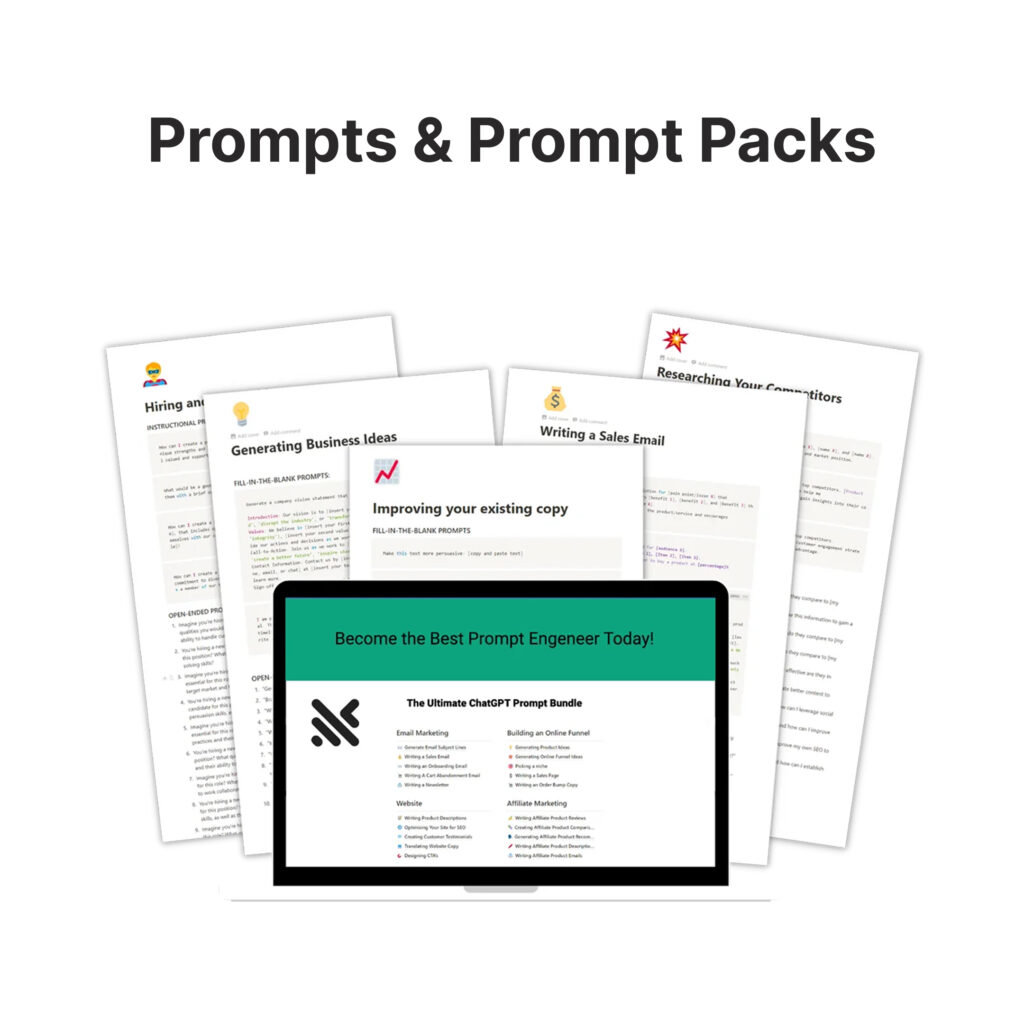
What it is: Curated packs of AI prompts (for ChatGPT, Midjourney, etc.), prompt templates / prompt engineering recipes for specific use cases (e.g. marketing, writing, design).
Why it works: Many people struggle about how to get good results from AI. Selling prompts lets them skip the “learning curve.”
How to do it well: Test your prompts so they reliably produce good output. Show before/after examples. Package them by niche (blogging, ads, social media, etc.).
6. SaaS Tools or AI-powered Web Apps
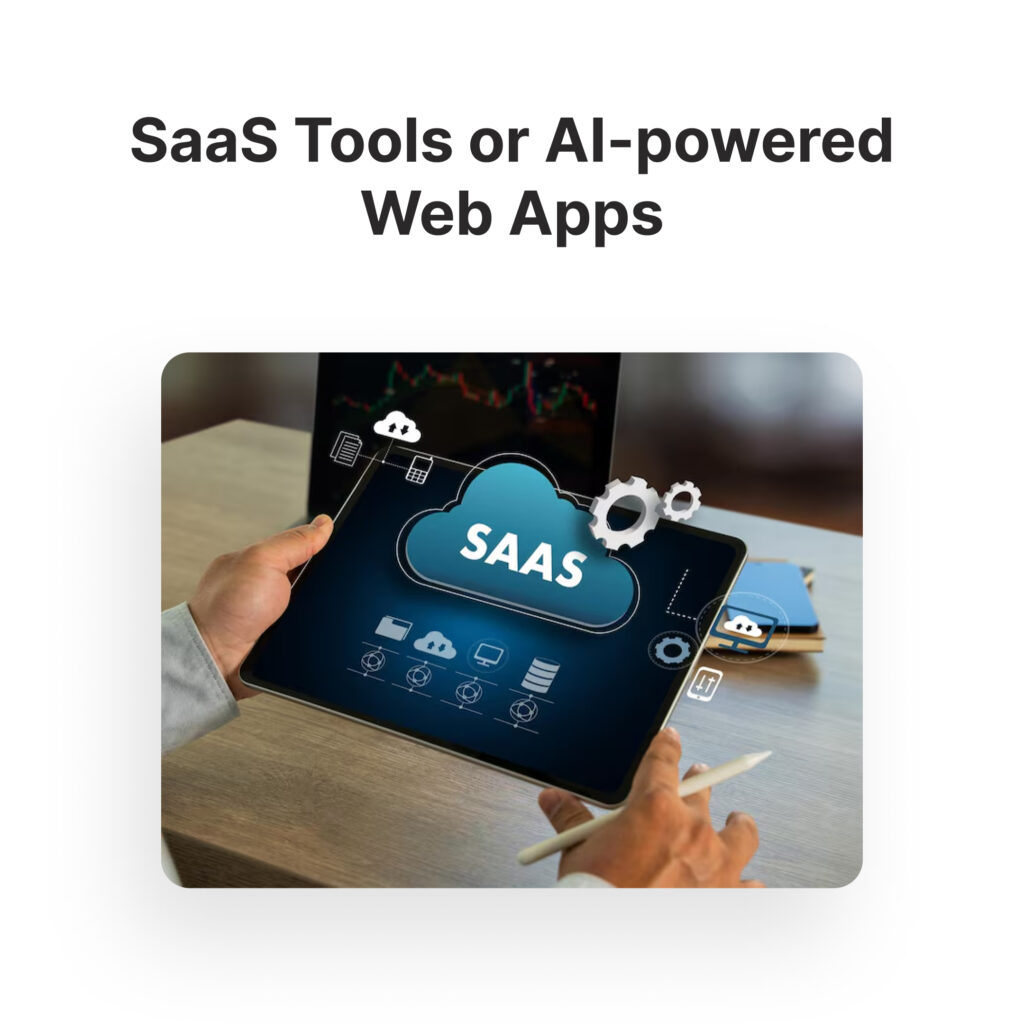
What it is: Light tools (web apps) that offer a specific AI function: e.g. image upscaler, text summarizer, grammar checker, niche chatbot, etc.
Why it works: Subscription income, recurring revenue. If you hit the right niche, many users can join.
How to do it well: Make UX simple. Solve one clear problem. Ensure reliability. Offer free trial / freemium to attract users. Keep AI costs in mind.
7. Audio Products: Music Loops, Voiceovers, Podcasts

What it is: Background music loops, custom voiceovers (using AI voice generation), sound effects, or even scripted AI-assisted podcasts.
Why it works: Content creators always need audio. Also, low ongoing cost once created.
How to do it well: Make sure license rights are clear. Quality matters a lot in audio. Use AI but refine (clean noise, adjusting tone). Package for easy use (various file formats, royalty free options).
8. Social Media Content & Templates
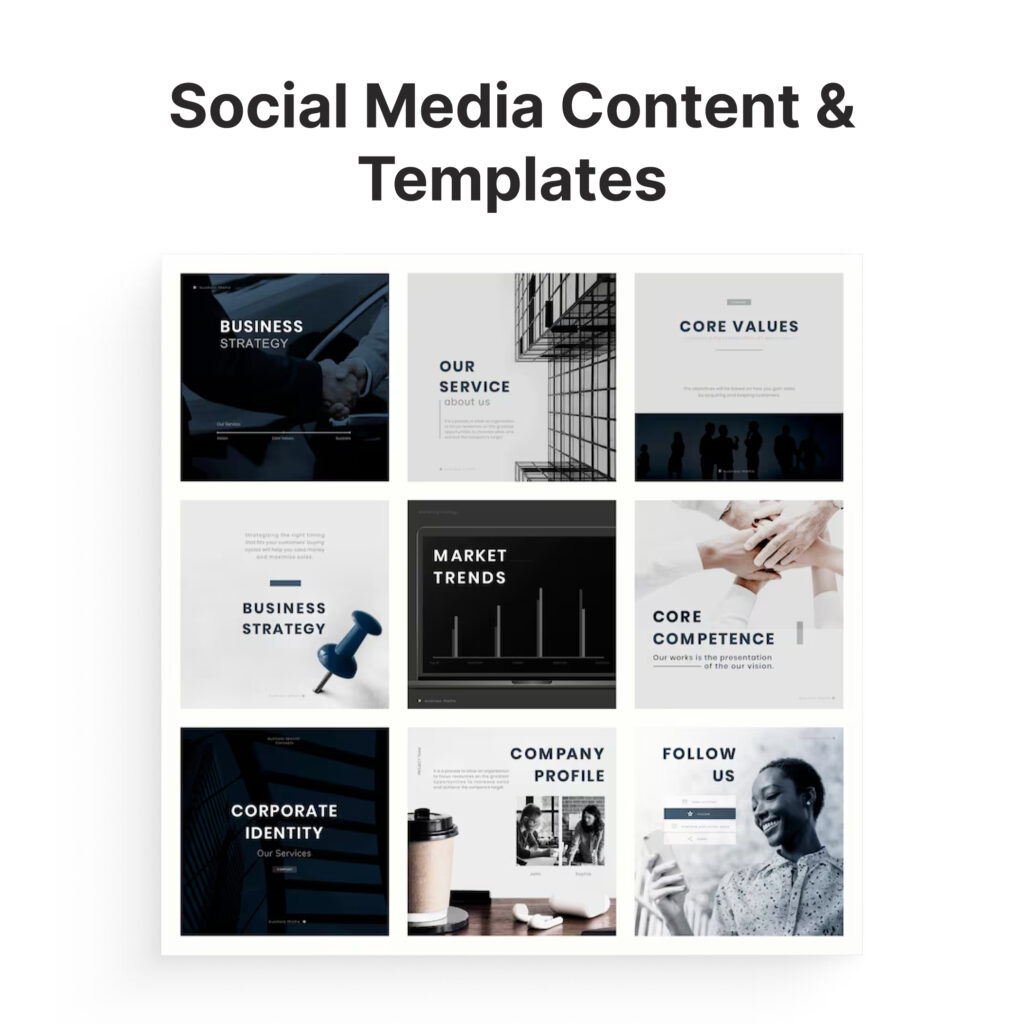
What it is: Ready made social media posts, graphics, caption templates, content calendars, video clips, stories etc., often aided by AI.
Why it works: Busy people/brands need content but lack time. Ready-to-use digital products make life easier.
How to do it well: Keep designs on-trend. Include editable formats (PSD, Canva, etc.). Provide post ideas, tips on customizing. Think about bundling (e.g. 30 post templates, content calendar etc.).
9. Print-on-Demand Digital Art / Merch Designs
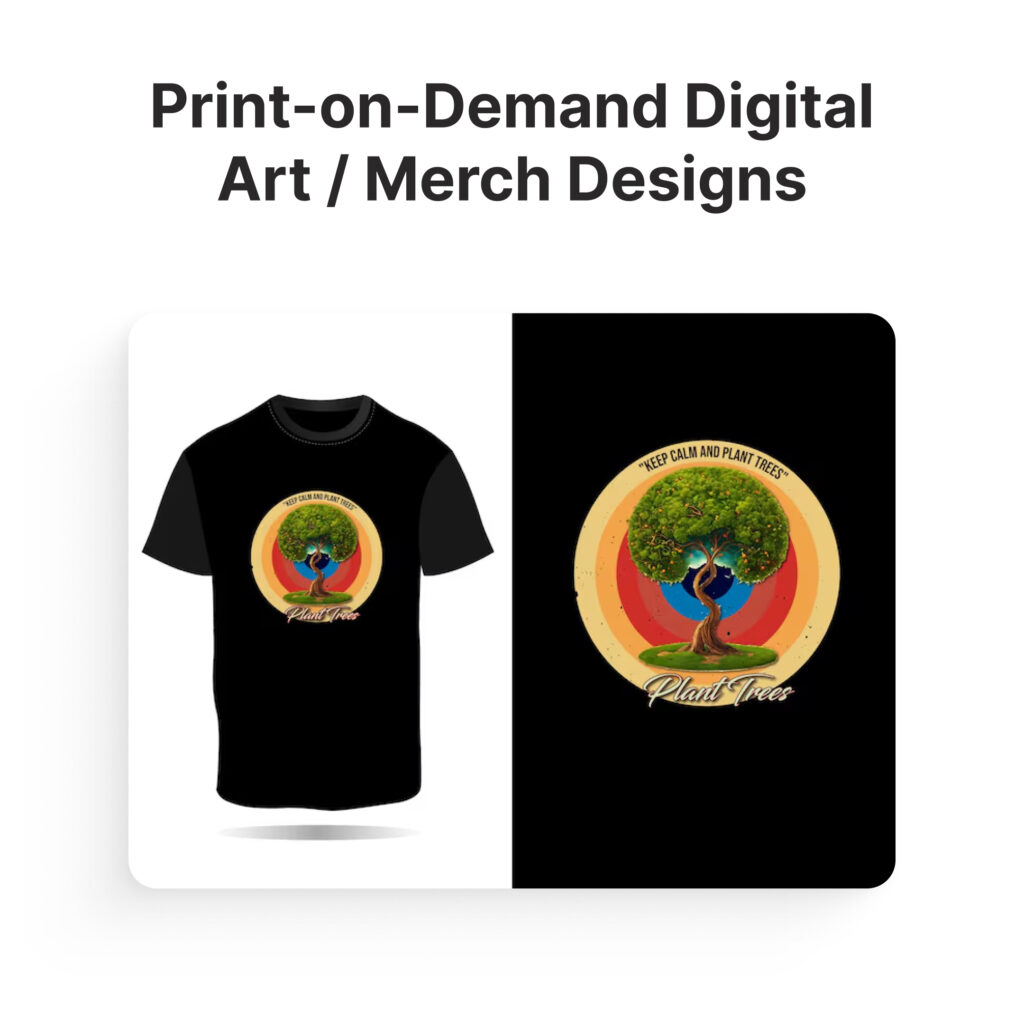
What it is: AI-designed art that’s used on merch like t-shirts, mugs, prints etc., via POD services. While the physical merch is not digital, your designs are digital products.
Why it works: Zero inventory, you only supply the design; the POD partner handles production and shipping.
How to do it well: Make designs attractive and niche-focused. Understand POD platform requirements (file types, resolution). Promote well (social media, influencers). Make mockups to show the products.
10. Memberships / Subscriptions for AI-Assisted Content
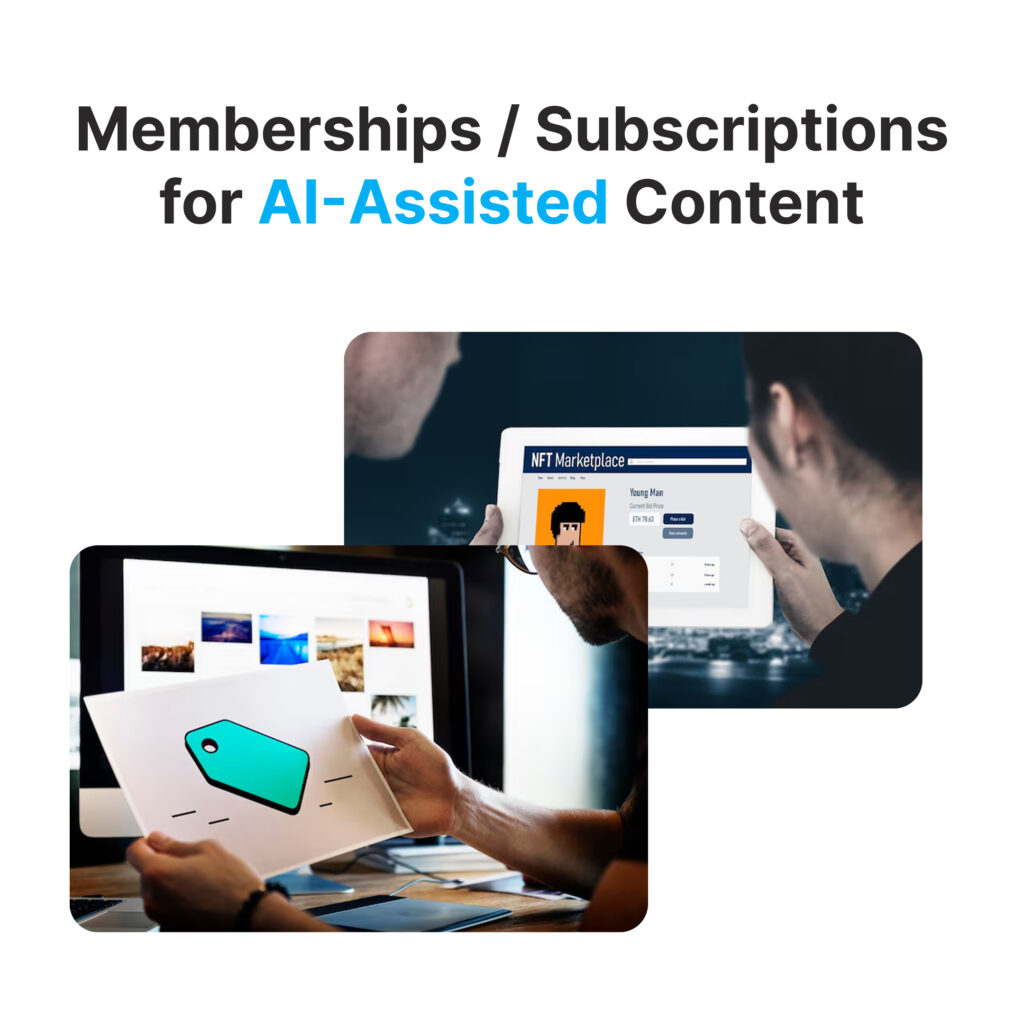
What it is: A subscription service where subscribers receive, say, monthly content packs (graphics, prompts, templates), or regular learning resources, or [members-only] AI tools / tools integrations.
Why it works: Recurring income. If members see clear value each month, you get high retention.
How to do it well: Keep delivering fresh, quality content. Have a clear theme or purpose. Build community (feedback, forums). Price appropriately (so subscription feels worth it). Use early feedback to iterate.
General Tips for Selling Digital Products Made with AI
- Ensure quality & human touch. AI helps, but editing, refining, personalizing matters.
- Licensing & legal clarity. Be sure the AI tools you use allow commercial use of outputs.
- Good presentation: mockups, previews, screenshots. Show what buyers get.
- Targeted marketing: understand who needs your product. Use content marketing, social media, email.
- Pricing & bundles: perhaps offer tiered versions or bundles so buyers feel getting more value.
How Sellzzy Helps Digital Product Creators
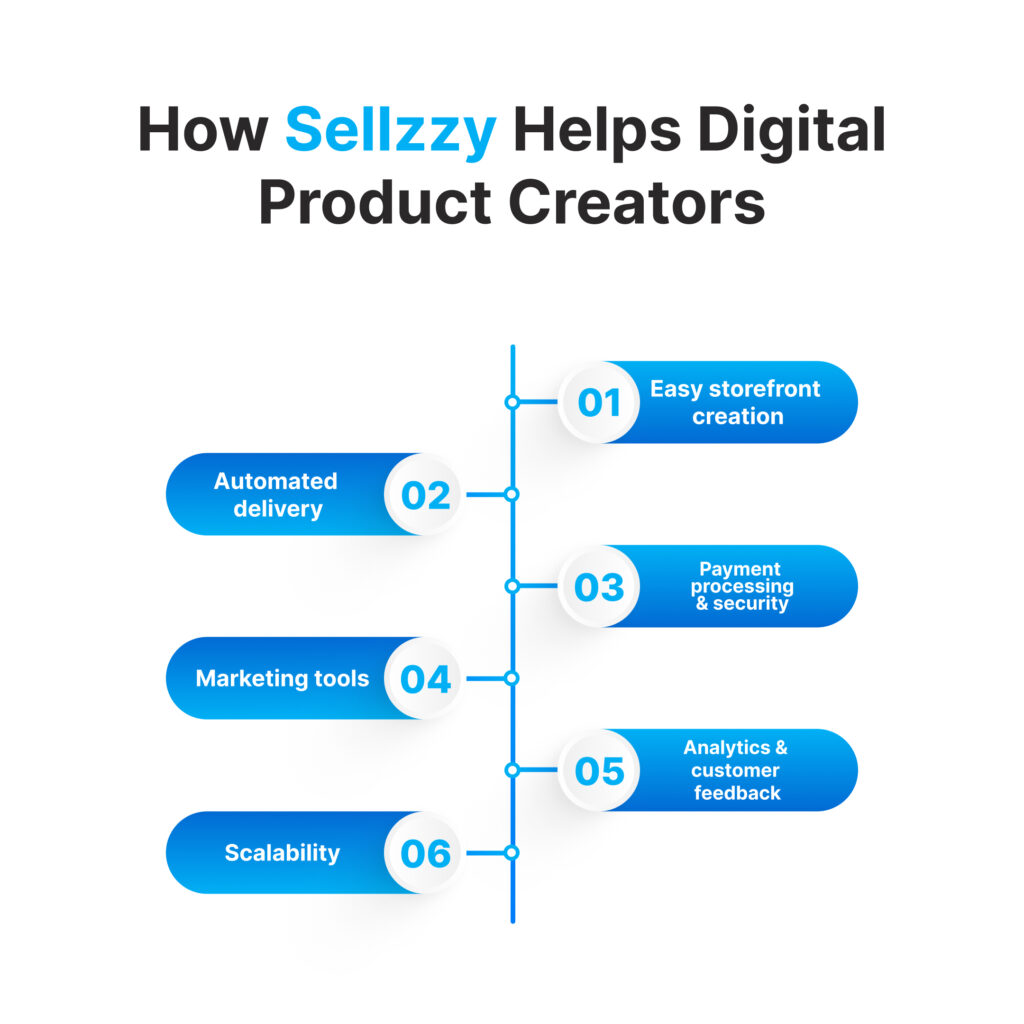
If you’re a creator of digital products, Sellzzy can be a powerful ally. Here’s how:
- Easy storefront creation: Sellzzy enables you to build a nice digital storefront (or “storefront pages”) effortlessly. You can showcase your digital products (ebooks, templates, graphics etc.) in a clean, professional way.
- Automated delivery: Once a customer buys, digital files are delivered automatically. You don’t have to manually send files, which saves you time and reduces errors.
- Payment processing & security: Sellzzy handles payments, ensuring secure transactions. This lets you focus on creating, not the technical payments side.
- Marketing tools: Tools or integrations within Sellzzy (or via partners) to help you promote your digital products: email captures, discount codes, coupons, bundle offers, maybe affiliate links.
- Analytics & customer feedback: You can see which products are selling, at what times, what products are popular or underperforming. This helps you refine product ideas or improve offerings.
- Scalability: As your product line expands (more templates, new prompt packs, etc.), Sellzzy scales with you: more uploads, more customers, more automation.
Conclusion
AI opens up many opportunities to create high-value digital products fast. Whether you choose to write e-books, design templates, build audio, or launch a subscription, the key is finding a niche, ensuring quality, and marketing well. Platform like Sellzzy remove much of the friction in delivering, selling, and growing your digital product business.
If you like, I can also give you 10 example product ideas with titles and pricing suggestions, or tailor these ideas for your local market (Bangladesh / South Asia). Do you want me to prepare that?
